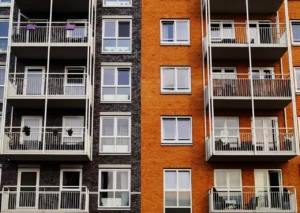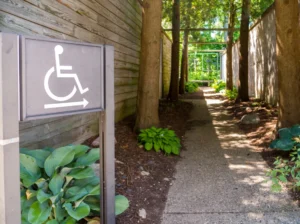Rents fell for the 25th straight month in August

Tenants Seek Better Deals as Apartment Rent Slide Continues
Rents fell for the 25th straight month in August, with prices down 2.2% year-over-year and momentum shifting as more renters opt to move for better value amid an ongoing market correction.
It comes from new Realtor.com data, which shows the national median rent for 0-2 bedroom units in the 50 largest metros now stands at $1,713, down $46 from the August 2022 peak, yet still $249 (17%) above pre-pandemic levels. This cumulative increase, while steep, has not kept pace with overall inflation, now up 26% since 2019, nor with the cost of for-sale homes, which has risen 51.3% in the same six-year window.
Studio apartments are now renting for a median $1,430—a decrease of 1.7% year-over-year and a 3.4% slide from their own peak. One-bedroom units saw a 2.1% slippage to $1,593, while the once red-hot two-bedroom segment experienced a 2.2% annual decrease, with the median now $1,897. Both one- and two-bedroom units have logged 27 consecutive months of price declines, the most sustained slide in recent memory.
These changes are affecting tenant behavior nationwide. During the pandemic boom years of 2021 and 2022, nearly 80% of renters chose to stay in place, but mobility rates are rising: Census data shows 21.5% of renters moved in 2023, inching up to 21.6% in 2024. The main reasons, according to Realtor.com, are the quest for more space, greater affordability and a desire to explore new neighborhoods.
Notably, cities with the sharpest rent drops are Las Vegas, Atlanta, and Austin, each of which saw a decrease by roughly 13.5% from their peaks. These cities are seeing some of the highest mover rates.
Market trends vary by region. Austin led major markets with a year-over-year decline of 6.5%, bringing its median to $1,436, 12.9% higher than in 2019 but now far below the 2022 peak.
Free Rental Application
Get 20 Rental Forms for FREE, including a rental application.
Denver rents tumbled 7%, to $1,785, nearly flat compared to six years ago at just 7.2% growth. Meanwhile, San Jose posted the largest six-year increase—with costs jumping 32.3% since 2019, despite a 1.8% dip to $1,299 in the past year. Miami, Jacksonville and Tampa remain standout outliers for long-term increases. Miami’s particularly surged by 34.7% over six years, even as newer leases dropped by 3.6% in 2025.
The scale of these declines is particularly pronounced in family-friendly metros. Nashville’s median fell 5.1% to $1,515, but that figure still sits 21% above pre-pandemic levels. Raleigh, often a destination for job seekers relocating from pricier cities, recorded a sharp 5.9% annual decline, with median rents dropping to $1,471.
In contrast, markets like New York and Chicago returned to modest growth, posting 0.5% and 0.7% year-over-year increases, respectively, with New York’s median rent an eye-watering $2,946, up 26.3% since 2019.
Even as rent relief becomes evident, tenants remain cautious. Monthly costs for apartments are still outpacing income gains in most regions, and the dream of homeownership remains distant for many.
The average age of a first-time homebuyer reached 38 last year, with more than half of surveyed renters saying they intend to buy a home in the next two years. Yet, saving for a down payment, limited affordable inventory and credit hurdles continue to push many households to rent longer than planned.
For multifamily landlords and investors, two years of declining rents present both challenges and opportunities. While occupancy rates in prime markets remain healthy, the pressure to compete on price and amenities is intensifying, especially in cities where renters have renewed bargaining power after a prolonged period of surging rents.
The data now suggest that affordability is the primary consideration for many renters—one that could shape multifamily investment and urban migration patterns for years to come.
Source: GlobeSt.













 Accessibility
Accessibility